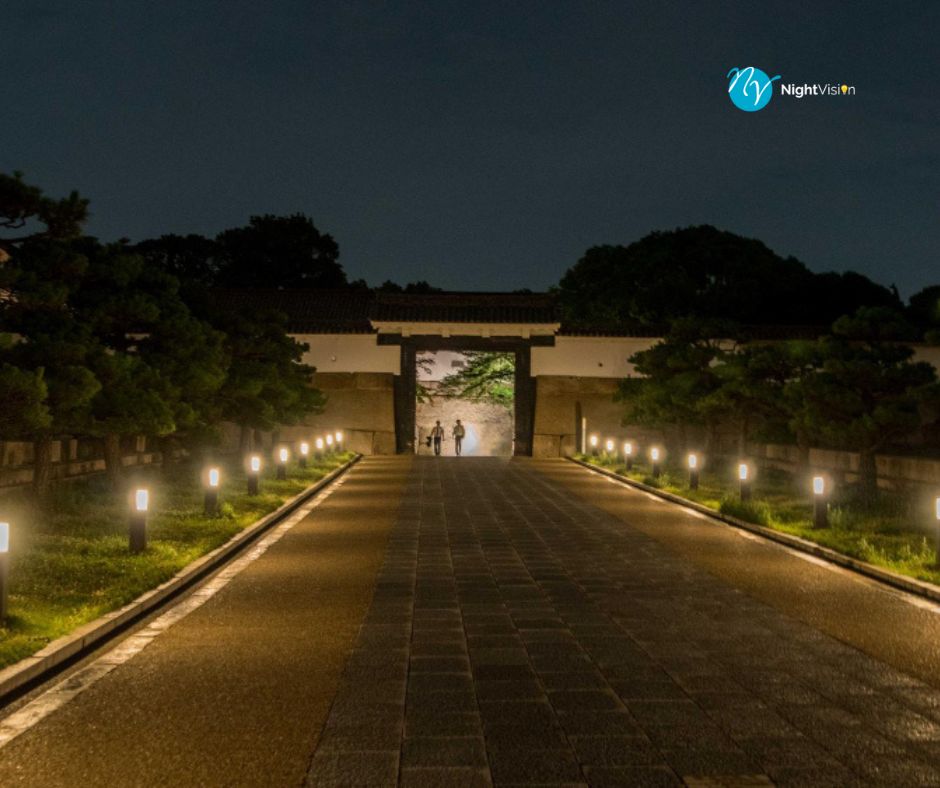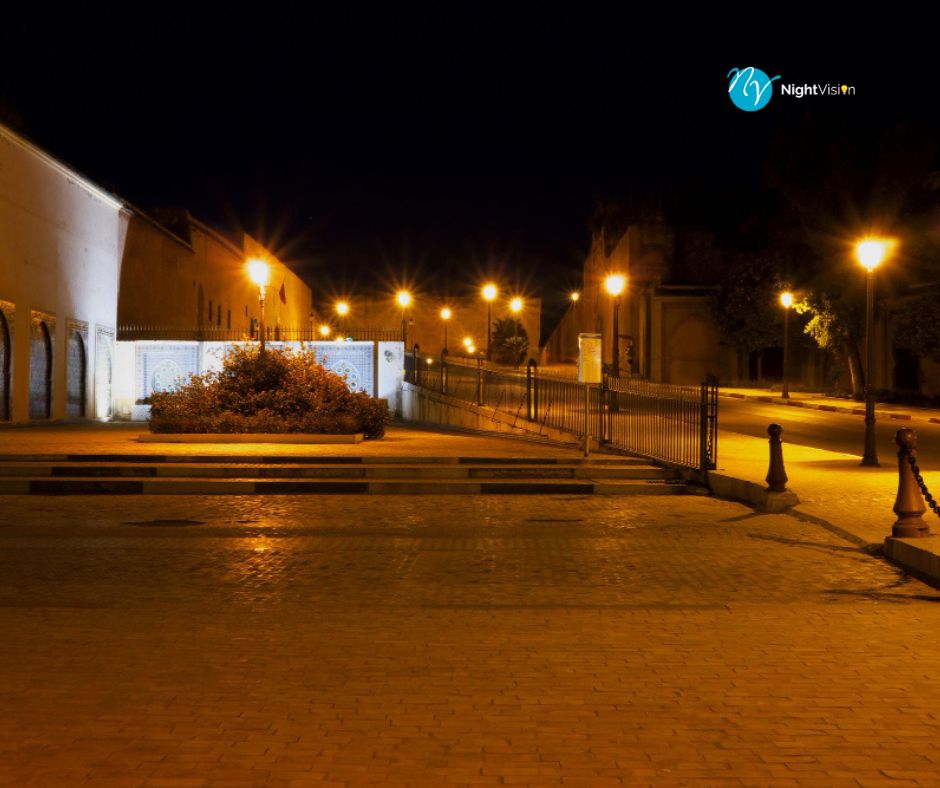Driveway lighting enhances the aesthetic appeal of your property and adds an extra layer of safety and security.
However, installing driveway lighting can be a challenging task, especially when it comes to wiring.
Several factors must be considered, from choosing the right type of lighting fixtures to ensuring proper wiring connections.
In this article, we’ll explore some bright ideas and wiring tips to make the installation of driveway lighting a breeze.
Planning and Preparation:
Before diving into the installation process, it’s crucial to have a well-thought-out plan.
Start by assessing your driveway layout and determining the areas where lighting is needed the most.
Consider factors such as entry points, curves, and potential hazards.
Sketch out a lighting layout indicating the placement of fixtures and the route of wiring.
This will help you visualize the final result and ensure that you have all the necessary materials before beginning the installation process.
Choosing the Right Lighting Fixtures:

Selecting the appropriate lighting fixtures is essential for achieving the desired ambiance and functionality. There are various options available, including:
- LED Path Lights: Ideal for illuminating pathways and driveways, LED path lights are energy-efficient and provide a soft, ambient glow.
- Bollard Lights: These fixtures are mounted on short posts and can effectively mark the edges of driveways or illuminate landscaping features.
- Floodlights: For enhanced security, consider installing floodlights with motion sensors to deter intruders and provide bright illumination when needed.
When choosing fixtures, opt for durable materials such as aluminum or stainless steel, which can withstand outdoor elements and ensure longevity.
Selecting the Right Wiring:
The type of wiring you choose will depend on factors such as the distance between fixtures, power requirements, and local building codes.
Here are some standard options:
- Low-Voltage Wiring: Low-voltage systems (typically 12 or 24 volts) are safer and easier to install than traditional 120-volt systems.
They require a transformer to step down the voltage from the primary power source.
- Solar-Powered Lighting: Solar-powered fixtures are an eco-friendly option that eliminates the need for wiring.
They harness energy from the sun during the day and illuminate your driveway at night.
Consider consulting with a licensed electrician to ensure compliance with local regulations and to determine the most suitable wiring option for your specific needs.
Installation Tips:
Once you have gathered all the necessary materials, it’s time to start the installation process.
Here are some tips to ensure a smooth and hassle-free experience:
- Use waterproof connectors and junction boxes to protect wiring connections from moisture and corrosion.
- Dig trenches at least 18 inches deep to bury the wiring and prevent accidental damage from landscaping activities or vehicular traffic.
- Install conduits or PVC piping to protect the wiring from physical damage and make future maintenance easier.
- Test the lighting system before burying the wiring to ensure that all fixtures are functioning correctly and positioned according to your plan.
Maintenance and Troubleshooting:
Once your driveway lighting system is installed, regular maintenance is essential to ensure optimal performance and longevity.
Here are some maintenance tips to keep your lights shining bright:
- Clean fixtures regularly to remove dirt, debris, and any buildup that may obstruct the light output.
- Check wiring connections periodically to ensure they are secure and free of corrosion. Replace any damaged connectors or wires promptly.
- Trim vegetation around lighting fixtures to prevent overgrowth from blocking the light or damaging the wiring.
- Inspect the lighting system for any signs of wear and tear, such as cracked lenses or fading finishes, and replace or repair as needed.
If your driveway lighting has any issues, troubleshooting may be necessary to identify and rectify the problem.
Typical issues may include flickering lights, dim illumination, or complete fixture failure.
Here are some troubleshooting steps to help you pinpoint the issue:
- Check the power source to ensure it is supplying electricity to the lighting system.
- Inspect wiring connections for loose or damaged wires and ensure they are correctly connected.
- Test individual fixtures by bypassing the wiring and connecting them directly to the power source to determine if the issue lies with the fixture or the wiring.
- Use a multimeter to test voltage levels along the wiring to identify any areas of low voltage or interruptions.
If troubleshooting proves challenging or if you need help determining the best course of action, feel free to seek assistance from a qualified electrician or lighting professional.
They can diagnose the problem accurately and recommend the necessary repairs or replacements to restore your driveway lighting to optimal condition.
Enhancing Efficiency with Smart Technology
For added convenience and energy efficiency, consider integrating innovative technology into your driveway lighting system.
Intelligent lighting solutions allow you to control and automate your lights remotely using smartphone apps or voice commands.
Features such as scheduling, motion sensing, and dimming capabilities can help optimize energy usage and enhance security.
Additionally, intelligent lighting systems often provide real-time monitoring and alerts, allowing you to detect and address any issues promptly.
Innovative technology offers a range of benefits for driveway lighting applications, whether you’re looking to save on energy costs, improve convenience, or enhance security.
Safety Considerations
When installing and maintaining driveway lighting, safety should always be a top priority. Here are some important safety considerations to keep in mind:
- To prevent injuries, use appropriate personal protective equipment (PPE), such as gloves and safety glasses, when handling lighting fixtures and wiring.
- Ensure that all electrical work is performed in accordance with local building codes and regulations to minimize the risk of electrical hazards.
- Turn off the power supply to the lighting system before performing any installation, maintenance, or troubleshooting tasks to avoid the risk of electric shock.
- If you’re not comfortable working with electricity or if the project is beyond your skill level, feel free to seek professional assistance from a licensed electrician.
By prioritizing safety throughout the installation and maintenance process, you can minimize the risk of accidents and ensure a secure environment for yourself and others.
Eco-Friendly Practices
In addition to enhancing safety and efficiency, incorporating eco-friendly practices into your driveway lighting setup can help minimize your environmental footprint.
Here are some ways to make your lighting system more environmentally sustainable:
- Choose energy-efficient LED fixtures, which consume less power and have a longer lifespan compared to traditional incandescent or halogen bulbs.
- Opt for solar-powered lighting fixtures, which rely on renewable energy from the sun and eliminate the need for grid electricity.
- Implement intelligent lighting controls, such as timers and motion sensors, to reduce unnecessary energy consumption by automatically adjusting lighting levels based on occupancy and ambient light conditions.
By adopting these eco-friendly practices, you can not only reduce energy costs but also contribute to a greener and more sustainable future.
Conclusion
Effortless driveway lighting is achievable with careful planning, proper installation, and ongoing maintenance.
By following the wiring tips, safety considerations, and eco-friendly practices outlined in this article, you can create a well-lit, safe, and environmentally sustainable driveway that enhances the beauty and functionality of your property. Whether you prefer a minimalist approach or a more elaborate design, there are endless possibilities to explore when it comes to illuminating your driveway with style and sophistication.
For expert assistance with your driveway lighting project, feel free to contact us at NightVision Outdoor Lighting to discuss your needs and schedule a consultation.
FAQs
Why is driveway lighting important?
Driveway lighting enhances the aesthetic appeal of your property. It adds an extra layer of safety and security by illuminating pathways and driveways, thereby reducing the risk of accidents and deterring intruders.
What factors should I consider when planning driveway lighting?
When planning driveway lighting, consider factors such as your driveway layout, areas needing illumination the most, entry points, curves, potential hazards, and the type of ambiance and functionality you desire.
How do I choose the right lighting fixtures for my driveway?
Select lighting fixtures based on your specific needs and preferences. LED path lights are ideal for pathways and driveways, bollard lights can mark driveway edges, and floodlights with motion sensors enhance security. Opt for durable materials like aluminum or stainless steel for longevity.
What are the different wiring options for driveway lighting?
Wiring options include low-voltage systems (12 or 24 volts) for safety and ease of installation, solar-powered lighting for eco-friendliness and convenience, and traditional 120-volt systems. Consult with a licensed electrician to determine the best option for your needs and to ensure compliance with local regulations.
How should I install driveway lighting to ensure longevity and functionality?
Use waterproof connectors and junction boxes to protect wiring connections, bury wiring at least 18 inches deep to prevent damage, install conduits or PVC piping for added protection, and test the lighting system before burying the wiring to ensure proper functionality.
What maintenance tasks are required for driveway lighting?
Regularly clean fixtures to remove dirt and debris, check wiring connections for security and corrosion, trim vegetation around fixtures, and inspect the system for signs of wear and tear. Promptly replace or repair any damaged components.
How can I troubleshoot common issues with driveway lighting?
Troubleshoot issues such as flickering lights, dim illumination, or fixture failure by checking the power source, inspecting wiring connections, testing individual fixtures, and using a multimeter to identify voltage levels along the wiring.
What are the benefits of integrating innovative technology into driveway lighting?
Innovative technology offers added convenience, energy efficiency, and security by allowing remote control and automation of lights via smartphone apps or voice commands. Features such as scheduling, motion sensing, and real-time monitoring enhance functionality and optimize energy usage.
What safety considerations should I keep in mind when working with driveway lighting?
Use appropriate personal protective equipment, adhere to local building codes and regulations, turn off power before performing any tasks, and seek professional assistance if needed to minimize the risk of accidents and electrical hazards.
How can I make my driveway lighting system more eco-friendly?
Choose energy-efficient LED fixtures, opt for solar-powered lighting to reduce reliance on grid electricity, and implement intelligent lighting controls to minimize energy consumption. By adopting these practices, you can contribute to a greener and more sustainable future.



